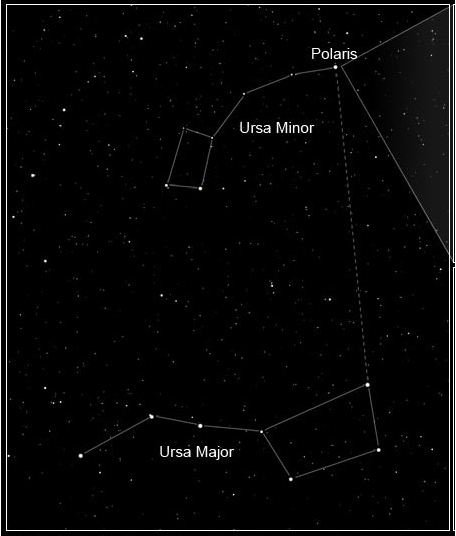Where in the Sky is the Little Dipper Located? How to Find the Little Dipper
What is the Little Dipper?
Most people in the northern hemisphere know what the Big Dipper looks like in the night sky. All seven of its stars are bright and obvious, and it’s often the first thing you recognize when you step outside. The Big Dipper is actually part of a larger constellation called Ursa Major, or “Big Bear.” By itself, it’s an asterism, or unofficial constellation.
But what about the Little Dipper? Officially part of the constellation Ursa Minor, or “Little Bear,” it also has seven stars in the form of a dipper. The most well-known of these is the North Star, Polaris. Two others, called Kochab and Pherkad, are also fairly bright - but unless you’re well away from city lights, the four middle stars are too dim to see, making the constellation hard to pick out.
Where in the Sky is the Little Dipper Located?
The Little Dipper is located next to the Big Dipper with part of the Draco constellation in between. Polaris, which is located at the north celestial pole, marks the end of the Little Dipper’s handle. The rest of the dipper revolves around Polaris like every other star in the sky, so the hardest part is finding Polaris.
The location of Polaris in the night sky depends on your latitude on Earth. If you were standing at the north pole, the north star would be directly overhead. As you move south in any direction, Polaris moves down toward the horizon to your north, disappearing from view if you pass the equator. Neither Polaris nor the Little Dipper are visible in the southern hemisphere.
How to Find the Little Dipper
Start by locating the Big Dipper. It has a three-star handle and a four-star bowl. Depending on the time of year, it could be right side up, upside down, or vertical.
Look for the two stars that mark the far end of the bowl from the handle. These are called Merak and Dubhe, and if you imagine that they mark a straight line extending up from the bowl, the next bright star on the line is Polaris. Merak and Dubhe are also called the “pointer stars” - because they point to the North Star.
Once you’ve located Polaris, look for two bright stars on the way back in the direction of the Big Dipper’s handle. These should be Kochab and Pherkad which mark the end of the Little Dipper’s bowl. The other four stars - two bowl stars and two handle stars - are dimmer ones in between.
If you’re in a dark enough area, you’ll likely also see a line of other bright stars halfway between the two dippers, curving up around the Little Dipper to the other side of Polaris. That’s the tail end of the Draco constellation.
Image Credit
Star map modified from NASA (public domain).
